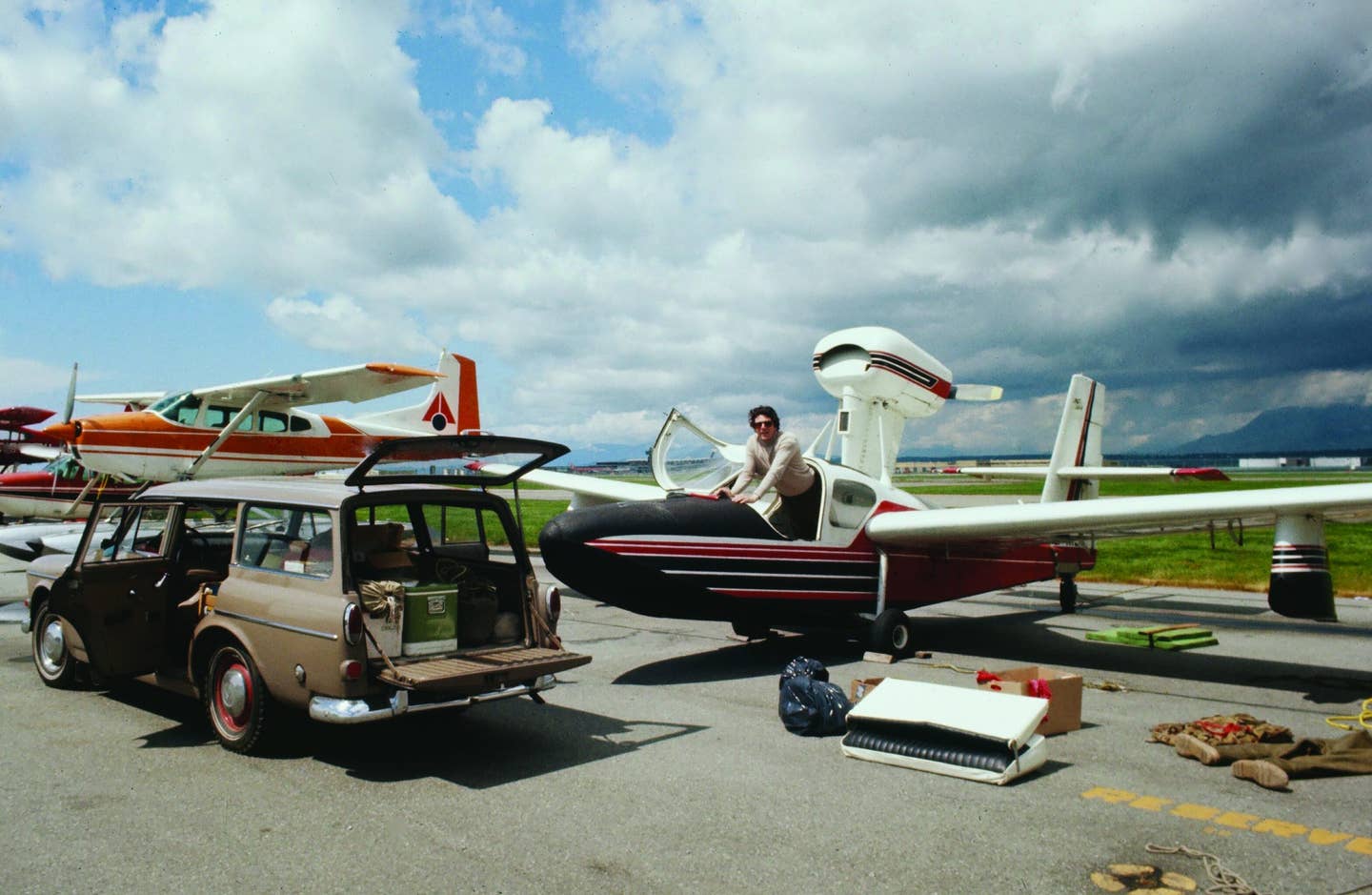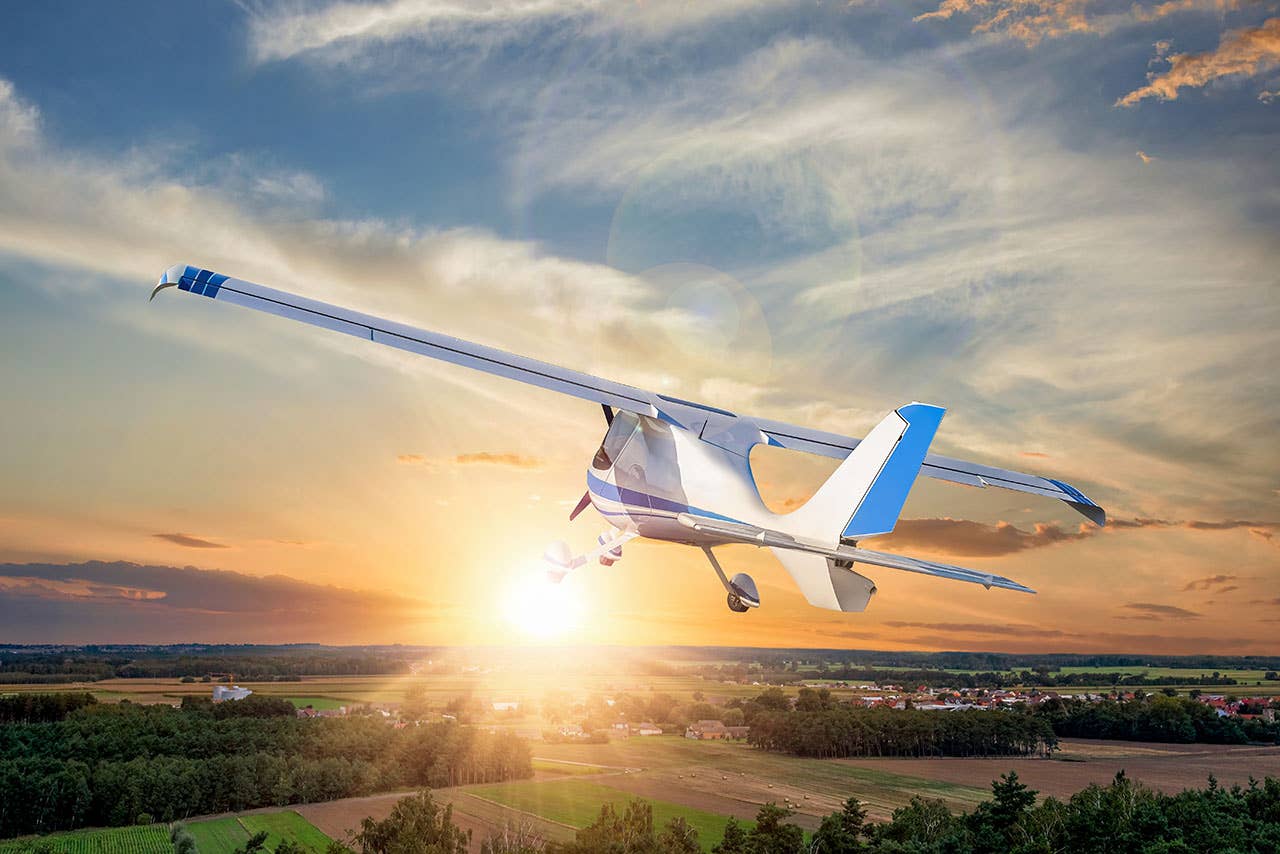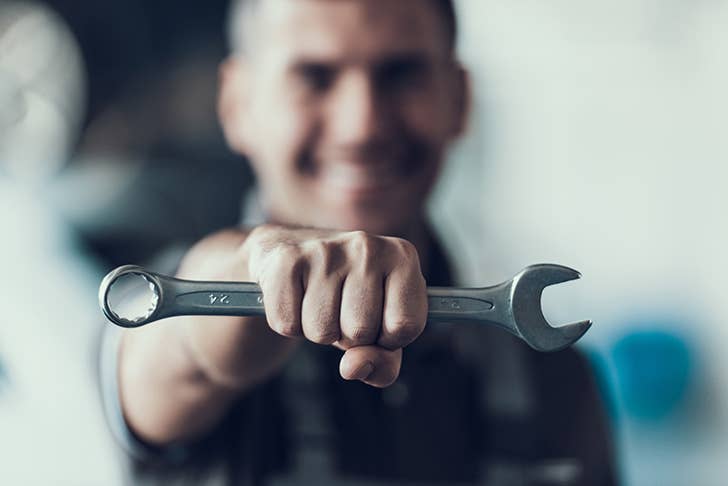4 Ways To Avoid A Nightmare Annual
Lessons one pilot learned the hard way, hopefully so you won’t have to.
It's probably not all that often that an airplane owner brings their plane in for an annual inspection and leaves with a smile. However, for seven years I was lucky enough to have that experience. During that time, I lived in Delaware, and the shop I used for my annual was located a short flight away in an adjoining state. The shop owner and IA retired from a major airline and was widely viewed in the area as one of the nicest people you would ever meet. I agreed with that assessment. I also agreed with his general philosophy on airplane maintenance, namely, if it's not broken, don't fix it. There are exceptions to this, of course, when it comes to safety-related items and FAA regulations, and I have always been proactive in that regard.
Unfortunately, my annual inspection "experience" changed dramatically this year. In 2016, after living for just under 20 years in Delaware, my wife and I decided to satisfy her longing to move back to where she grew up in Massachusetts. I knew the move would affect my flying experience due to differences in the weather and leaving the flying friends I had made in Wilmington. However, I completely underestimated one key point---the importance of having a nearby maintenance shop that I trusted both from the standpoint of making me feel safe but also from the standpoint of being able to accomplish maintenance work in a timely and cost-effective manner. After moving to Massachusetts in the fall of 2016, I decided that I would fly the 400-plus miles to my "old" shop for my 2017 annual. As in previous annuals, that one was relatively uneventful. However, when the time came for the annual in 2018, I made a decision I regret. I decided to give a shop near where I now live a chance to do the annual.
Subscribe todayto Plane & Pilot magazine for industry news, reviews and more!
The airplane in question for this inspection was a 1973 Cessna 177b (Cardinal) with 1970 tach hours and the same number of total hours on the airframe. I had owned this plane since 2010. The plane was always hangared and, despite having the original paint job and interior, it still looked great. The truth is, I learned to fly in this plane; it felt like a trusted friend and I loved owning it.
When I bought the plane, it had only 1,165 hours on engine and airframe. I had fully expected to overhaul the then-37-year-old engine immediately. However, compression tests, bore scoping, oil analysis and numerous discussions with trusted friends, mechanics and an engine data analysis service convinced me to hold off. In the end, I am convinced that was the right decision because eight years after purchase, compression tests, oil analysis and data from the on-board engine analyzer all continued to look good.
However, here is when the story takes an unfortunate turn. As opposed to a couple weeks of down time and a typical bill hovering around $3,000, my 2018 annual inspection took three months to complete at a cost of $20,200. I took the plane into the new shop the last day of April with a promise that the work would be started the first week of May, but that immediately slipped to mid-May. When mid-May came and went and the plane hadn't even been pulled into the shop yet, I started to get concerned. Thankfully, by the last week in May, they had finally begun the work, and I thought we were close to being done. Little did I know that we were not even a third of the way through the ordeal. I didn't hear anything further from them for nearly three weeks (mid-June), and what I heard knocked me off my chair because it was a 16-page discrepancy list. Reading the list, I felt like a member of my family was being insulted. What do you mean there are all these things wrong with my baby? She's perfect! Not only that, but if every item listed were to be taken at face value, I would have to believe that I had been flying an unsafe plane for years. I didn't believe that.
In terms of specifics, on the itemized discrepancy list there were 131 items shown, 82 relating to the airframe and 49 to the engine. Of the airframe discrepancies, 50 were listed as being required repairs, while for the engine 36 were listed as required. In the end, after a little bit of clarification and haggling, I agreed to nearly all the items listed as required and agreed to a few of the optional items.
Most of the items listed as required discrepancies were routine and not expensive. For example, for the engine, compression test, oil and filter change, cut and inspect oil filter, check primer ops/leak check, clean ignition leads and plug wells, inspect and replace induction air filter and vacuum wear inspection, were all listed as required but really were included as part of the basic inspection or were inexpensive fixes. There were other items that each required a couple hours of labor and inexpensive parts, such as valve covers leaking, an alternator attachment U-bracket that was cracked and a carb heat valve arm that was loose on the shaft.
The big-ticket item related to the prop. The IA listed dressing and painting the prop as required and estimated four hours to complete this task. However, he stated that he wasn't looking forward to doing this work and that he was hesitant to "pass" the existing prop without sending it out to a prop shop for inspection and potential overhaul.
For the airframe squawks, like those for the engine, most that were required were routine and included ELT check, checking exterior lighting, checking cable tensions, lubing the interior and exterior and de-greasing the belly. The big-ticket items listed as required on the airframe included six hours of labor to treat light to moderate surface corrosion on the spar carry through, eight hours of labor to treat significant corrosion aft of the battery vent on the belly and two hours to clean, torque and torque seal elevator hinge bracket bolts. The shop also argued strongly for 11 hours of labor to replace some rusting cabin air intake scat hoses and cabin overhead scat hoses, even though they were listed as optional.
By now, it was more than six weeks into this annual inspection, but I still hadn't decided what to do about the prop, so I requested that the shop provide an estimate to do the agreed required work and the optional scat tube replacements, and I finally received the estimate for the work a couple days later at $10,273. The plan was that once that estimate was in hand, I would decide about the prop.
This is the point in the process that I will admit that I made a couple of mistakes. Prior to the annual inspection, I had already been considering selling the plane. Although the engine was still running strong I knew it would only be a matter of time before I would have to face the inevitable overhaul of the engine due to its tach time and age. Although I liked the "retro" feel of the original 1970s paint and interior, I also expected that I would want new paint and interior sooner than later. The estimates I received for all three generally were coming in at $50,000-$60,000, so an expense that big was a factor. However, an even bigger factor in my mind was all the downtime that would be required to get all this work done as well as the logistical challenges. In any case, back to the prop story. What I should have done if I was ready to sell the plane was get the minimum done, namely dress and paint the prop. However, when I received an estimate of $3,100 to overhaul the prop, I agreed to have it done.
Like every other part of this story though, things didn't go to plan. The shop was certain that the prop blades would not pass muster, but when it was sent out, the report came back that the blades were okay but the hub had some corrosion and needed to be replaced. The options I was offered were:
1) Prop overhaul with reconditioned used hub for $5,800
2) Prop overhaul with new hub for $7,700
3) A brand new two-blade McCauley direct replacement for approximately $8,600
4) A new STCed three-blade Scimitar prop from Hartzell or McCauley for approximately $11,000
As noted above, the original estimate was $10,273, and when I went along with the prop overhaul for $3,100, I expected that the final total would be a little over $13,000. However, by the time I chose option No. 1 to account for the replacement prop hub, the whole process was starting to feel like a runaway train. Adding in the reconditioned hub with the prop overhaul, the new estimate was now 50 percent more than the original quote. I wish I could tell you that this was the end of the story, but it's not.
Eight weeks into the annual inspection, I received a message from the shop that they had found another issue that needed to be addressed. In reviewing the logs, they were unable to confirm that the oil pump gear kit installed in 1981 satisfied the requirements of AD 96-09-10. Basically, what they found was that the oil pump had an aluminum oil pump gear still installed that was subsequently found to be unsafe and should have been replaced no later than July 15, 2001. Since there was no record of compliance with this AD, it was necessary to replace the aluminum gear for an additional $1,888. At this point, the estimate for the annual was $12,161 plus $5,803 for the prop overhaul.
This felt like the final straw, but we still weren't done because, according to the shop, while they had the accessory case off for the oil pump gears, the idler/spur gear that links the crankshaft gear to the camshaft gear jumped one tooth. When they put everything back together, they had difficulties starting the plane and when it did start, it ran poorly. By now it was just a week short of three months in the shop, and it took another week for them to figure out what had happened and correct it.
Long story short, by the time the annual was finally complete, it had been in the shop a full three months and I was presented with a final invoice for $20,700. Since the invoice from the prop shop came back exactly as estimated, this meant the other repairs were nearly 25 percent over the estimate of $12,161.
There is much to be said about why this annual took so long and cost so much. However, as the plane owner, I can point to a few factors that made it particularly hard to endure. The first is that for the shop that I had used for all the previous annuals prior to this year, I had developed a relationship that felt like a partnership. I had complete trust in the prior IA's judgement about airworthiness issues and with his willingness to work with me to find cost-effective solutions to repair issues.
There are undoubtedly some who will read this article and conclude that significant maintenance items had been missed in previous years, but I don't believe that. Furthermore, there were many items in the squawk list that were marked as required that I question. One is it taking an estimated two hours to repair leaking valve covers. Sure, leaking oil is not good, but old planes leak some oil, as anyone knows who has spent time around hangars, so this could have been deferred. Also, 0.7 hours to glue an existing compass card onto the panel? I could provide a lot more details here, but the cumulative effect of the squawk list as presented felt more like an exercise in finding billable items that could somehow be justified rather than what I view as the more desirable repair on fault approach. Given the fact that maintenance-induced failures are not uncommon, one could argue that this "shock and awe" approach is risky, as evidenced by the idler/spur gear jump.
As a related point, an EAA webinar by Mike Busch refers to three things that you should be able to expect from a shop doing your annual inspection, namely, competence, communication and cooperation. With respect to competence, I don't have any doubt that the IA for this inspection has good understanding about aircraft maintenance, but one aspect of competence is accomplishing tasks in the agreed timeframe.
It's the other two C's, however, where I take issue. What is a reasonable amount of time to accomplish an annual inspection? Clearly, I had agreed to quite a bit of work, more than could reasonably be accomplished in a week or two, but communication on progress was largely non-existent. And 3 months? When questioned about why the communication wasn't better, particularly considering the significant overage in the final bill, the IA's response was, "I could spend hours a day just calling and emailing people on these many small issues endlessly updating estimates etc., or I could spend all that time turning wrenches getting their airplane done that much faster." Huh? Of the three C's, the hardest pill for me to swallow related to cooperation.
So with the goal of trying to prevent others from repeating the annual inspection experience I had this year, here are a few points to consider:
1) If you have worked with a shop for previous annuals and you like and trust them, don't change. In my case, I could have flown the 400 miles to my old shop and almost certainly would have been happier with the outcome.
2) Understand your goals/plans for your plane: Is this your forever plane, or do you plan to sell it soon? If it's the former, doing optional repairs might be justified, but if it's going to for sale soon, doing the minimum that will keep you safe is the wiser choice.
3) If you must choose a new shop, do your homework. Handing over your plane for annual inspection is a big decision. Learn what you can about the shop's reputation. If you can, prior to the annual, start with some small repair items to get a sense for how they do business. Is their communication good? Do they deliver on time? Are their costs close to estimates? Do you get the sense that they want to scour your logbooks not so much to ensure that everything was done correctly but more as an excuse to run up the bill? If you begin the conversations with the new shop and you feel like you are at a restaurant where the waiter is trying to upsell you on the surf, turf and caviar special, run.
4) Even after you have begun the annual, fight the feeling that you are being held hostage and that you have no control. In the worst-case scenario, if the experience goes completely south, getting a ferry permit could be an option.
The end of this story is that knowing there is not a shop nearby that I trust resulted in me listing the plane for sale during the three months the plane was out of commission. I really wasn't sure whether I wanted to sell but thought I would just test the waters. In the end, I was convinced to sell it largely because, despite all the work that was done, there is more to do.
Among the many calls I had in response to the advertisement, one was an A&P who convinced me the plane would be going to a good home. So, for the first in many years, I am without a plane of my own. One thing I do know is that when I go through my first annual inspection with my next plane, I will be a lot better informed than I was this time around!

Subscribe to Our Newsletter
Get the latest Plane & Pilot Magazine stories delivered directly to your inbox






